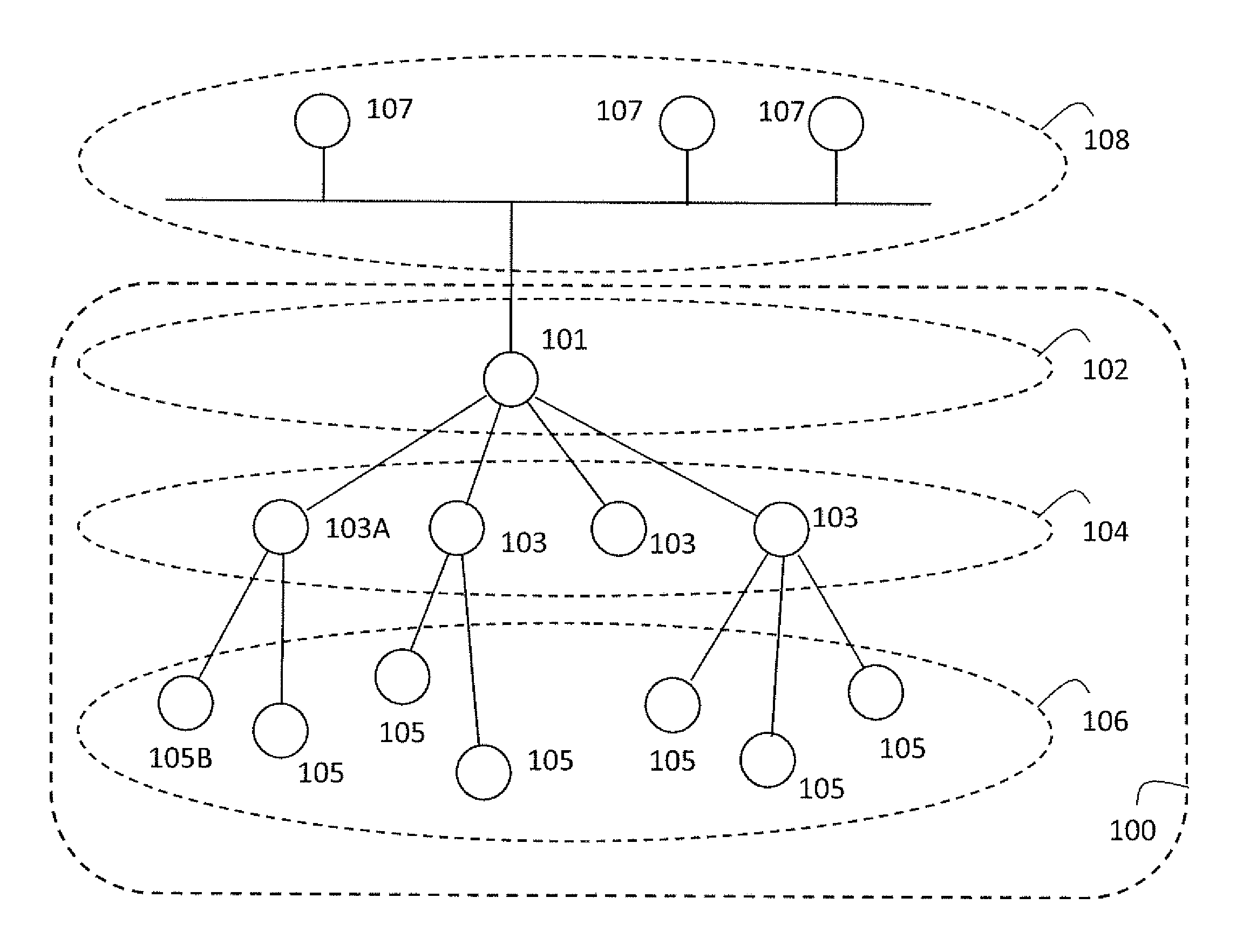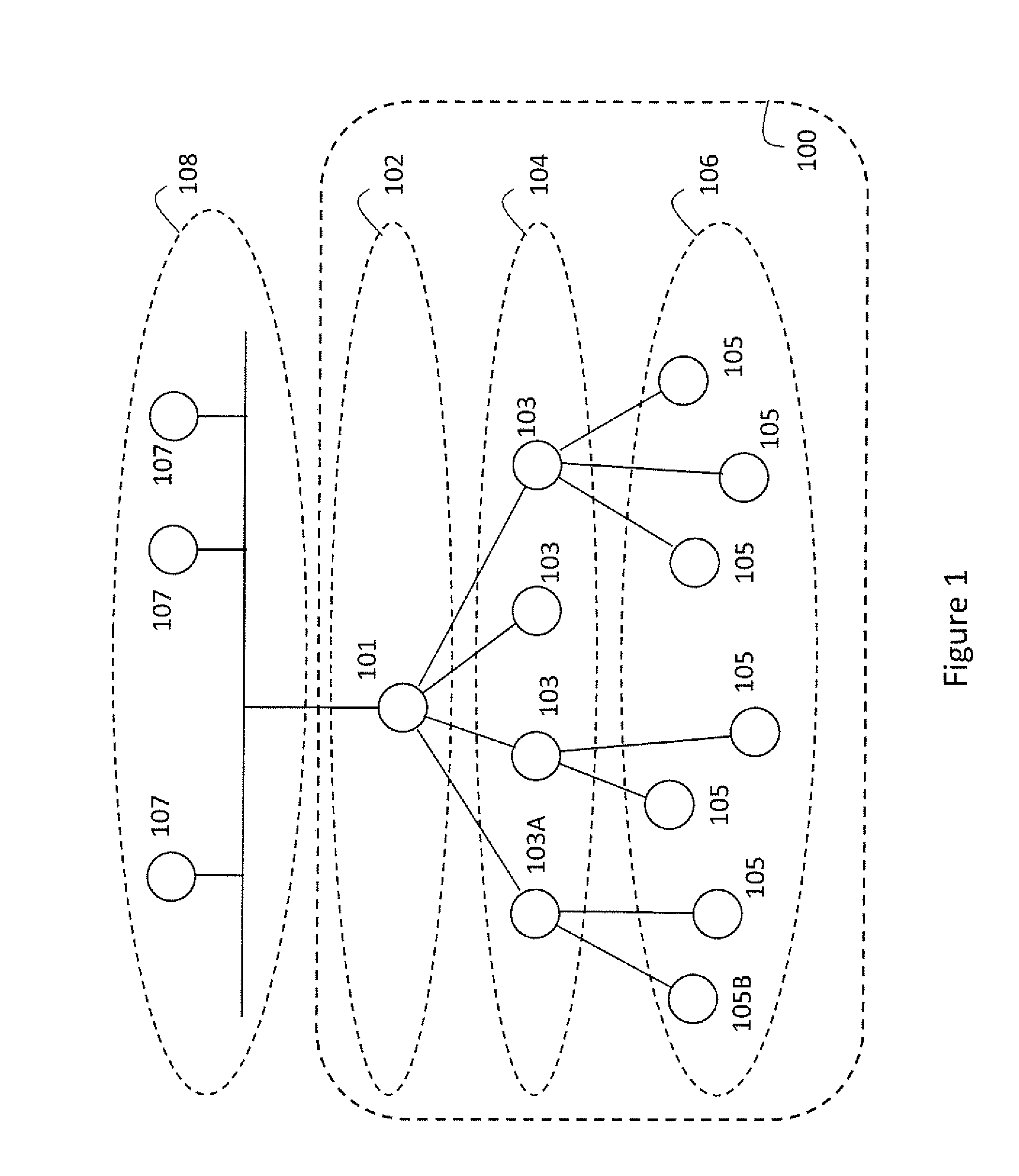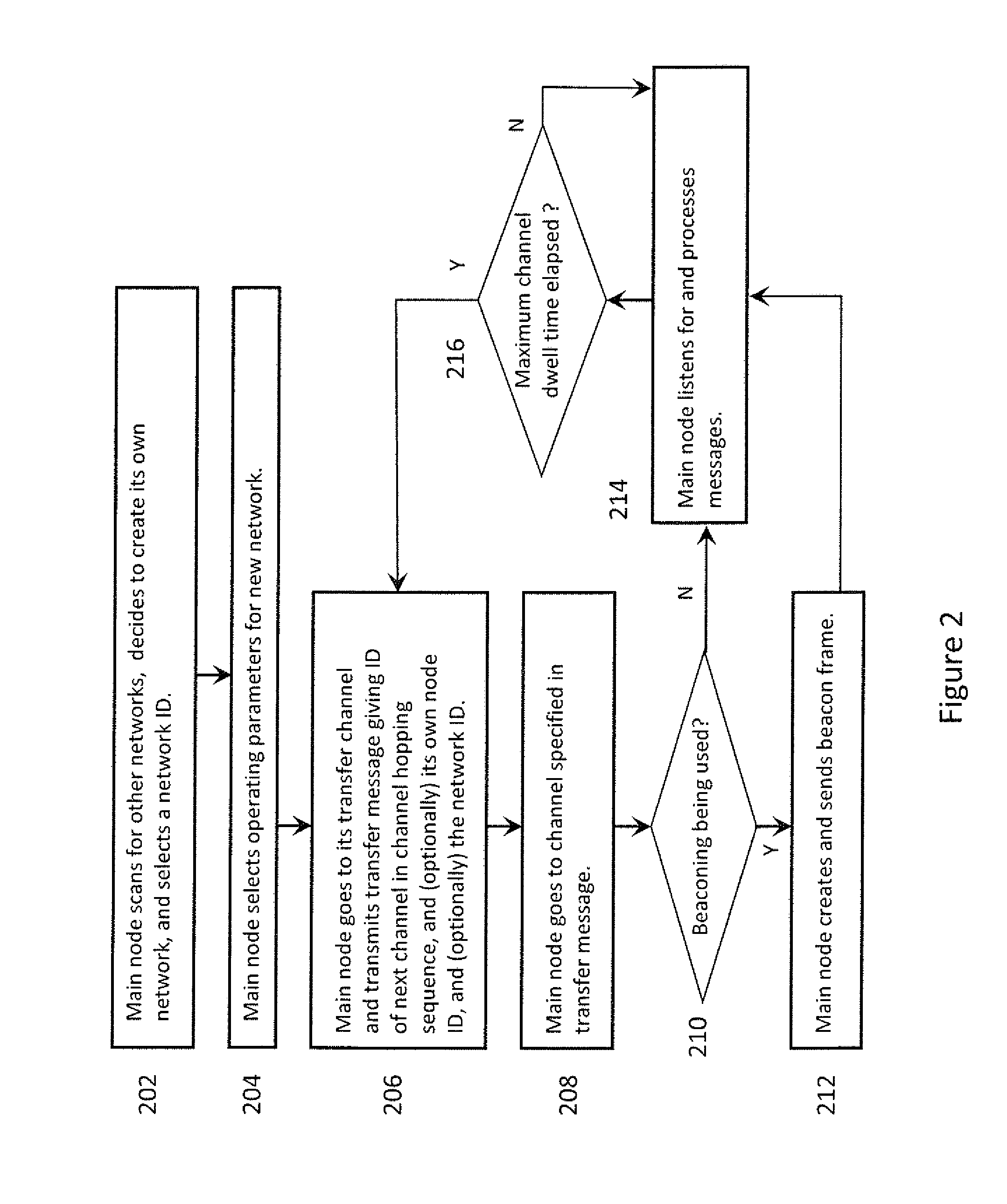Scalable protocol for large wsns having low duty cycle end nodes
a technology of low duty cycle end nodes and scalable protocols, applied in the direction of network topologies, synchronisation arrangements, wireless commuication services, etc., can solve the problems of poor performance, nodes in the middle are not able to understand either message, and conventional communications protocols utilized with multi-tier wireless sensor networks experience certain limitations, so as to reduce channel scanning time
- Summary
- Abstract
- Description
- Claims
- Application Information
AI Technical Summary
Benefits of technology
Problems solved by technology
Method used
Image
Examples
Embodiment Construction
[0028]FIG. 1 illustrates a multi-tier wireless sensor network (MT WSN) 100 formed in accordance with an embodiment. The MT WSN 100 includes a main node 101, such as a coordinator node or gateway node that defines a first tier 102. The first tier 102 is logically linked to a second tier 104 that includes parent (e.g., repeater) nodes 103. Some or all of the nodes 103 in the second tier 104 are logically linked to one or more children (e.g., end) nodes 105. The nodes 101, 103 and 105 form wireless node-to-node links. Optionally, repeater nodes may be logically linked to one another. Optionally, the second tier may include one or more end-nodes with linkage to main node 101 and no other linkages to other nodes. The entire collection of children nodes 105 defines a third tier 106 of the network 100. Optionally, more than three tiers may be utilized.
[0029]In this description, “logically linked” refers to the fact that the two nodes on the respective ends of the node-to-node link are list...
PUM
 Login to View More
Login to View More Abstract
Description
Claims
Application Information
 Login to View More
Login to View More - R&D
- Intellectual Property
- Life Sciences
- Materials
- Tech Scout
- Unparalleled Data Quality
- Higher Quality Content
- 60% Fewer Hallucinations
Browse by: Latest US Patents, China's latest patents, Technical Efficacy Thesaurus, Application Domain, Technology Topic, Popular Technical Reports.
© 2025 PatSnap. All rights reserved.Legal|Privacy policy|Modern Slavery Act Transparency Statement|Sitemap|About US| Contact US: help@patsnap.com



